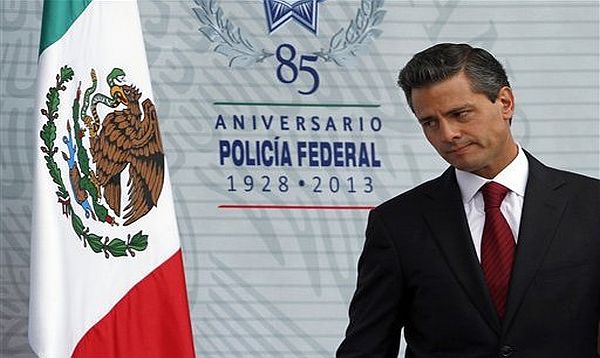Mexico City, Mexico — The Mexican government announced plans Monday to invest about $100 billion in rail, road, telecom, and port projects over the next five years, including Mexico's first high-speed rail links.
Among the projects are the modernization or building of four airports, seven seaports, and about 3,350 miles of highways. The government will strengthen fiber optic networks and expand broadband internet access, and speed up freight train service.
"Mexico can be the great logistics platform for Latin America," Transportation Secretary Gerardo Ruiz Esparza said. "We have to create significant savings in the time and cost of transporting goods."
But in announcing the plan, President Enrique Pena Nieto emphasized the goal of reviving passenger trains in Mexico.
 |
| Ferrosur train network in southern Mexico |
For more than a century, Mexico depended on railways to move goods and passengers, and rebels even fought much of the 1910-1917 Revolution from trains. But Mexico abandoned all regular passenger trains more than a decade ago because the service was poor quality and little-used. Existing lines were given over to moving freight, considered the priority, and only a handful of short tourist train routes remain.
Pena Nieto said Monday that about 360 miles of high-speed rail links will be built, including links between Mexico City and the nearby cities of Toluca and Queretaro.
Another line will cross the Yucatan Peninsula. Though details have not been released, it is expected to link the Caribbean coast resort of Cancun with the colonial city of Merida, Yucatan.
"Nobody can doubt that better infrastructure translates into more competitiveness and productivity, which will ignite economic growth and social well-being," Pena Nieto said. "These are investments that will translate into jobs."
While high-speed trains have become popular in parts of Asia and Europe, it remains to be seen how well that will work in Mexico, where mountainous terrain and unique infrastructure problems exist. For example, squatters often build shacks on railway rights-of-way in Mexico and most existing rail lines have street-level crossings that would be extremely dangerous with high-speed trains flying through.
Building new lines in such conditions will be costly, as will attracting passengers willing to pay higher ticket prices for high-speed trains.
"Mexico really doesn't have the characteristics for high speed trains," said Jorge Fernandez Acosta, an architecture professor specializing in urban design and transport issues. "Our terrain is very mountainous, very extreme."
Fernandez Acosta said he liked better Pena Nieto's proposal to build a light-rail urban transport project in Guadalajara, Mexico's second-largest city, but noted "even that wouldn't be a complete solution" for the traffic-clogged metropolis.
Pena Nieto will also have to reverse the poor reputation that the state-run trains built up in their final years, before service was cancelled in 1999. Trains often stopped inexplicably for hours, air conditioning broke down, cars moved at a snail's pace and sometimes took days to reach their destination.
But Tsung-Chung Kao, a professor at the railroad engineering program at the University of Illinois at Urbana-Champaign, noted that "every country goes through that," convincing passengers that modern high-speed trains are not like their old versions.
"Every country that builds a first high-speed line, builds a second," Kao, noting "All around the world, people are building like crazy."
The key, he noted is finding routes with the right length - between 60 and 600 miles - and enough passenger demand to make the trains competitive.


